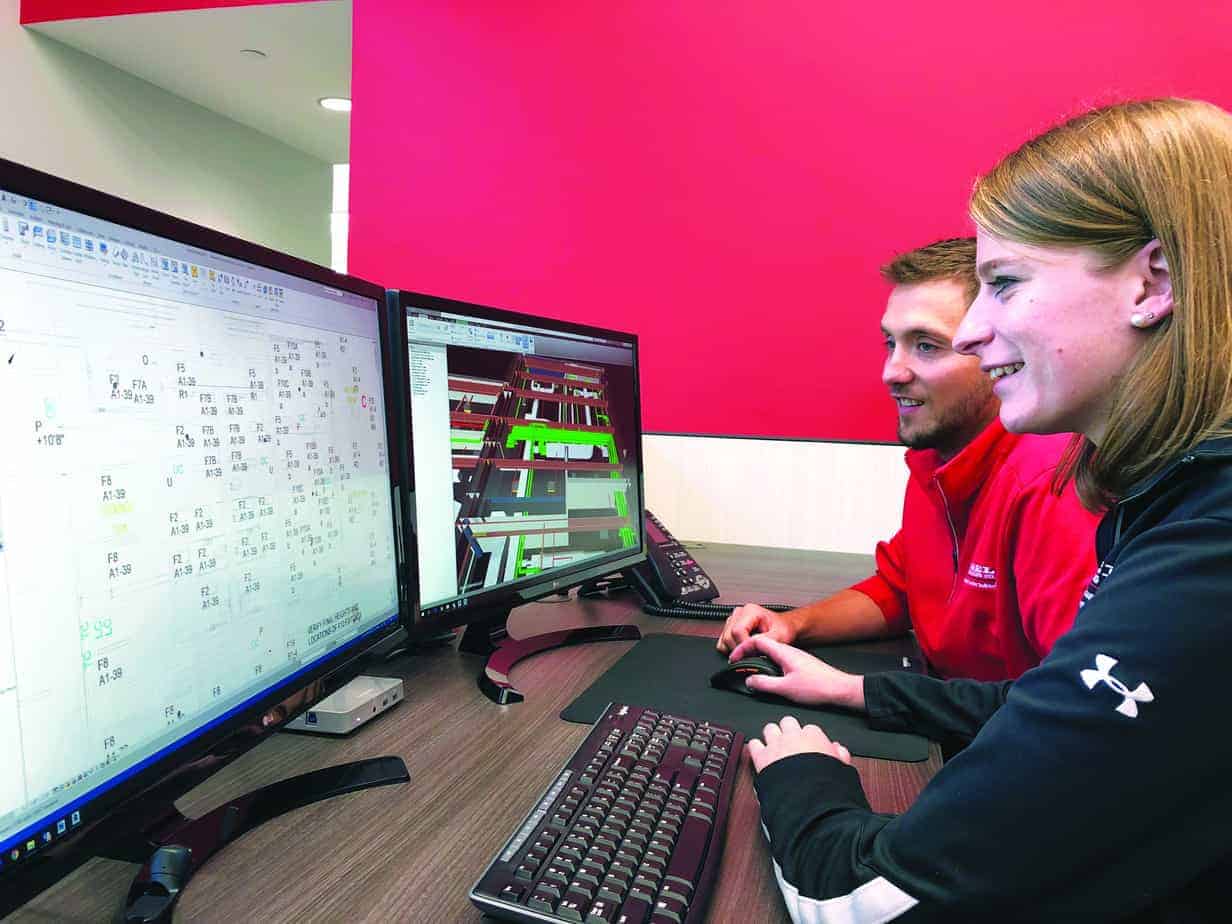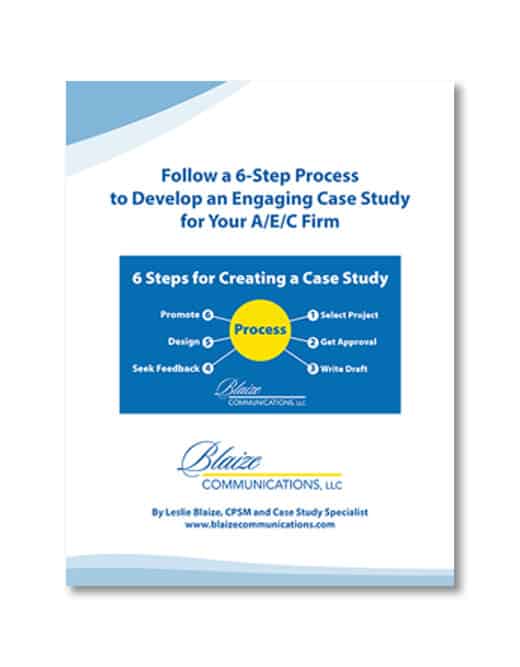Is a STEM (Science, Technology, Engineering & Math) career right for the high school graduate in your life?
Professionals in the Architecture/Engineering/Construction industry offered a message worth sharing for teens considering future careers.
STEM companies require employees with a wide variety of skill sets.
Yes, many of the jobs favor individuals with a high aptitude for science and math. But companies also require marketers, designers, writers, and others with diverse backgrounds.
The following professionals shared their views about the benefits – and challenges – of STEM careers.
The Joy of Solving Problems
“There is no better feeling than approaching a difficult problem head-on, evaluating all the potential solutions, then working with a group of determined people to uncover the perfect solution,” said Frank Gorham, project manager, Vogel Brothers Building Company, Madison, Wisconsin. “That is what STEM is in a nutshell: problem-solving.”
As a student, algebra intrigued Gorham and led to his decision to pursue a career in construction management.
“Although the problems that I solve now have multiple solutions, the journey of evaluating each solution with a team of construction professionals and coming up with the project-specific solution is what brings me joy,” he said.
Early Influence Leads to Career Choice
For Larry Barton, working with his father on construction sites led to his decision to pursue a degree in Architectural Technology. In his early years, he learned how to do masonry, roofing, drywall and carpentry.
“While working in construction, I always admired the guys in the job trailer with white shirts drafting plans for the contractors. When I finally had the opportunity to go to college, I wanted to be one of those guys,” Barton said.
When Barton enrolled in college, Information Technology was the hot career choice in terms of jobs and earnings, but his passion was to pursue architecture. Fortunately, he was able to pursue both paths through the Architectural Technology program which focused on Architecture and computer-aided design.
Hard Work Leads to Success
Barton, who is the president and CEO of Strang, Inc., Madison, Wisconsin, offered encouragement to students who didn’t graduate at the top of their class.
“Anyone with a passion for science, technology, engineering or math should certainly consider a career in a STEM field. But you don’t have to be a whiz at math or science,” Barton said. “Those who are dedicated and work hard will typically outperform the whiz kids every time. If you love what you do, you’ll find a way to succeed.”
And not all STEM careers require individuals to be strong in math.
Rafeeq Asad, Architectural Associate, JLA Architects + Planners, Madison, Wisconsin, revealed that his field allows for a wide array of talents and interests.
“There are the technical positions that probably require more math and geometry or even physics,” he explained. “Then there are creative positions, such as designer, that are purely right-brained.”
Jobs in architecture include everything from specification writers to code researchers, interior designers, construction administrators, and project managers.
When Asad took his fifth accounting class in business school, he realized that he preferred obtaining a master’s degree in a more creative field. That course pushed him towards architecture.
“Anybody with an interest in problem solving, creativity and buildings should consider architecture,” he said.
Diverse STEM Jobs
And don’t forget to take a broader view of STEM-related professions.
Alyssa Scheuneman, marketing manager at MSA Professional Services, Champaign, Illinois, advises, “If you enjoy writing, editing and graphic design, consider applying those skills to professional services marketing. It’s greatly deepened my appreciation for all that goes into planning, designing, constructing and maintaining safe, sustainable communities.”
While at the University of Illinois at Urbana-Champaign, Scheuneman learned the fundamentals of account management and public relations. In her current role, she puts those fundamentals into practice.
“Now, I get to lead a team of tremendously talented marketing professionals, and no two days are the same,” she said. “The A/E/C industry is in a constant state of flux, and so is the world of marketing. When you combine them – buckle up!”
Diverse Workers Needed
For high school seniors interested in STEM careers, there’s good news. They shouldn’t have too much trouble finding a job once they earn a degree.
According to the Carmon Group, the number of workers under the age of 25 in all fields has increased by one percent, while the number of engineering and computer workers (the two most in-demand STEM fields) has decreased by 25 and 15 percent respectively.
The New American Economy Research Fund reports there were about three million more STEM jobs in 2016 then skilled workers to fill them.
The Carmon Group asserts that despite the need for STEM workers, interest levels are about the same as they were in 2000. And despite efforts to encourage young people of color and women (and especially women of color) into STEM careers, progress remains stagnant.
The “utter lack of diversity” in architecture surprised Asad.
As of 2013, he reported, fewer than two percent (2,006) of the 107,581 licensed architects in the United States are African-American; 385 of these are African American women.
“That has got to change,” he said.
“It can be tough working in a day-to-day environment where no one looks like you,” Assad revealed. “But it also presents the opportunity to work to change perceptions and charter new pathways towards diversity and inclusion that aren’t currently being utilized.”
What’s Ahead in A/E/C?
STEM careers – including those in the A/E/C industry – change rapidly to keep up with technological advances.
The construction industry is no exception.
“Now entire buildings are being built in 3D on a computer and complicated structural components like steel beams are being fabricated based off those 3D models,” said Gorham.
“Collaboration and communication also are at an all-time high within construction,” he added. “Technology allows for files to be shared, questions to be answered, and complicated details to be accessed by the swipe of a finger on an iPad.”
STEM Careers Benefit Communities
Roberta Rosenberg has worked with many STEM-oriented firms and organizations in her marketing career. She’s now the marketing director for the American Council of Engineering Companies, Washington, D.C., the trade association for the engineering business industry.
She encourages young people – especially women – to consider STEM careers, and not just because many of them are high paying.
“I’ve come to appreciate the far-reaching impact of the engineering industry on not only our lives but our communities and overall economic health, ” she said.
Rosenberg outlined the many ways engineers are making a difference in the world:
“You need to get to work or school? Engineers design the bridges, tunnels, railways, airports and highways that take us there. Want clean water and breathable air? Engineers design the systems that make it happen. You want strong, aesthetically-beautiful, energy-efficient buildings to house and shelter us? Engineers design them, too. From skyscrapers, schools and hospitals to repurposing old shopping malls, engineers are making our lives better and ultimately our world more sustainable.”
For young people looking to make a difference, Rosenberg strongly recommends exploring the possibilities afforded by the STEM-focused professions.
Contribute Through a STEM Career
Some high school graduates may be ready to pursue a STEM career. Others may wonder if it’s right for them.
“The thing about STEM that I did not expect is that at the heart of innovation and problem solving is people. Those with a STEM background tend to see problems not as a burden but as an opportunity for improvement,” said Gorham.
“I would recommend STEM to any student looking to pursue a fun and exciting career where each day is different and no problem is too big to overcome,” he added. “STEM is not about being the best at something; it is about working hard and sharing ideas to make the world a better place.”
What advice would you offer to high school seniors considering a STEM career?


